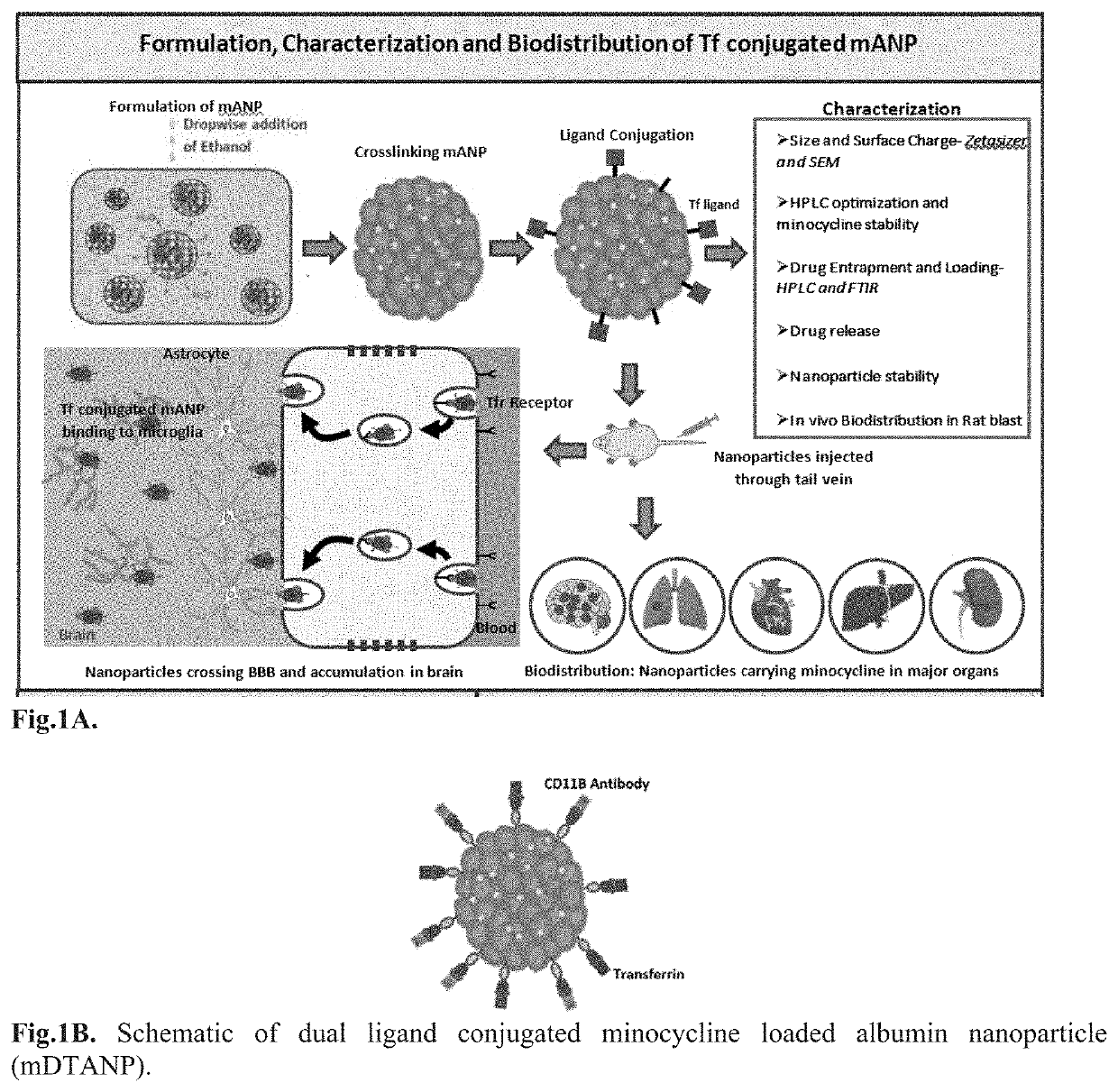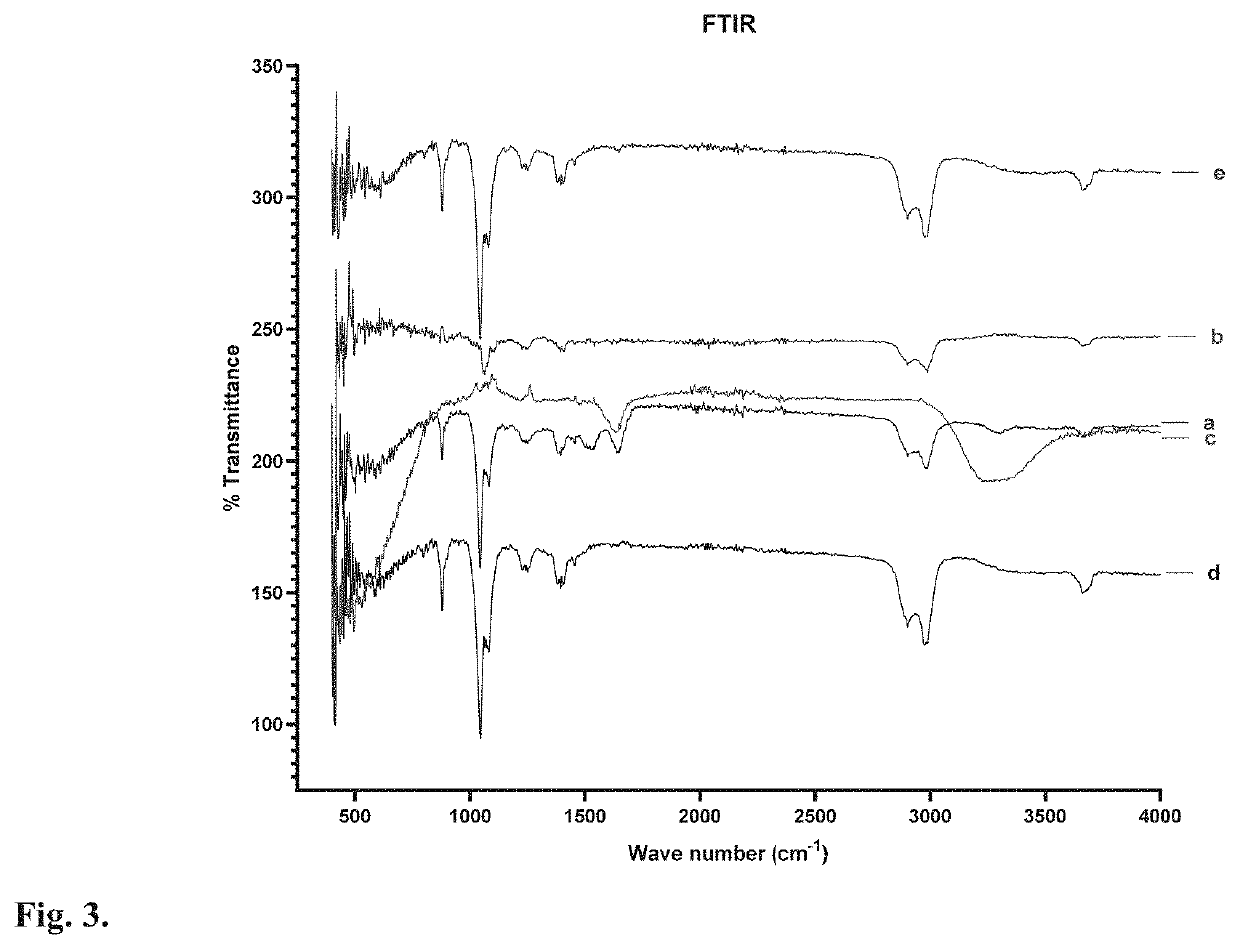Targeted Nanoparticle For The Treatment Of Traumatic Brain Injury And Other CNS Diseases
a traumatic brain injury and nanoparticle technology, applied in the direction of nervous disorders, tetracycline active ingredients, drug compositions, etc., can solve the problems of fluid filled inner ear and auditory brain structures being more susceptible to blast shock waves, permanent hearing loss, and traumatic brain injury
- Summary
- Abstract
- Description
- Claims
- Application Information
AI Technical Summary
Benefits of technology
Problems solved by technology
Method used
Image
Examples
experimental examples
[0130]The following experimental examples are given to merely illustrate the features of the present invention and are in no way meant to limit the scope of the invention to any particular embodiment.
[0131]The protein NPs was obtained by desolvation that can be achieved through precise addition of a desolvating agent (ethanol or acetone) to albumin solution at an optimum pH (optimal size and encapsulation) with constant stirring until turbidity. A decrease in the solubility of albumin followed by phase separation in water during the desolvation process leads to nanoparticle formation. Further, the nanoparticles can be stabilized by crosslinking lysine and guanidino side chains of albumin with the crosslinking agent glutaraldehyde. When crosslinking is increased, the rigidity of the nanoparticle can lead to successive decreases in particle size due to the formation of more compact particles.
[0132]In the present experiment, hydrophobic minocycline aggregates in aqueous solution and in...
PUM
| Property | Measurement | Unit |
|---|---|---|
| pH | aaaaa | aaaaa |
| size | aaaaa | aaaaa |
| pH | aaaaa | aaaaa |
Abstract
Description
Claims
Application Information
 Login to View More
Login to View More - R&D
- Intellectual Property
- Life Sciences
- Materials
- Tech Scout
- Unparalleled Data Quality
- Higher Quality Content
- 60% Fewer Hallucinations
Browse by: Latest US Patents, China's latest patents, Technical Efficacy Thesaurus, Application Domain, Technology Topic, Popular Technical Reports.
© 2025 PatSnap. All rights reserved.Legal|Privacy policy|Modern Slavery Act Transparency Statement|Sitemap|About US| Contact US: help@patsnap.com



